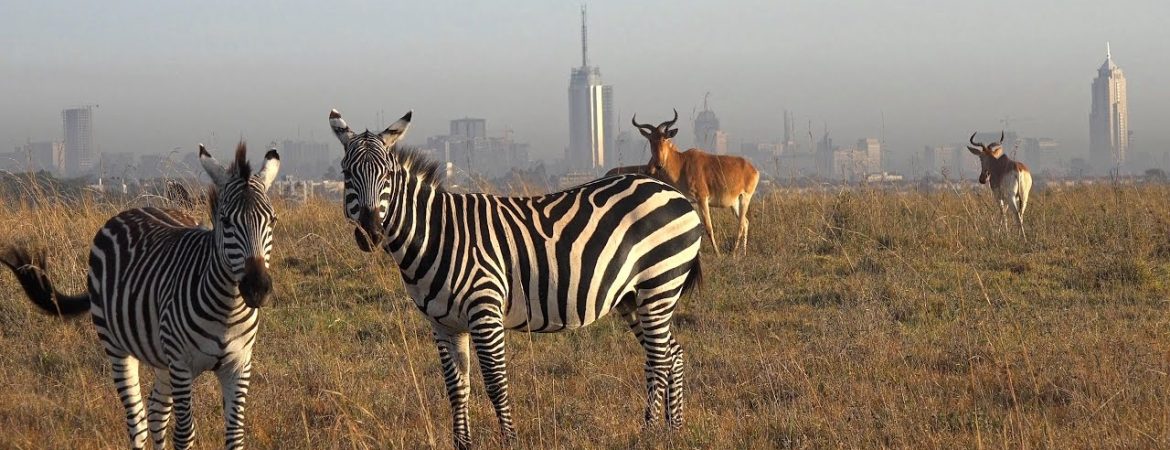NAIROBI NATIONAL PARK

Nairobi National Park is located just south of central Kenya right next to and within the Nairobi city region. Travelers landing at the Nairobi airport can literally see the park and potential wildlife as the flyover and land at the airport.
There is nowhere else in the world where such a collection of wilderness and wildlife sits so adjacently to a major city. Only 4-miles (6.4 km) separate the center of the city from the wildlife in the reserve.
The national park encompasses an area of 45.26 square miles (117.2 sq. km) and was the first national park established in Kenya. The Nairobi park is smaller than most Kenyan and other Africa national parks. Although it is so small, it is quite diverse in habitats. The majority of the habitats are dominated by open plains, grasslands and scattered acacia trees.
Other parts of the park include a highland forest, rocky gorges, broken bush company, and riverine forest. The varied habitats bring a variety of mammals and bird species.
The city patrons and national park wildlife are literal neighbors almost habituating in the same space. There is an electric fence that separates the city area with the national park wilderness area.
The park sits at just over 5,000 feet (1,524 m) ranging from 5,030 feet to 5,774 feet (1,533 to 1,760 m) and although limited features a range of habitats and wildlife species.
Almost everyone traveling to Africa sits in hope of seeing the predator species. Nairobi National Park does not disappoint with predators including lion, leopard, cheetah, and hyena. Other large mammal species include buffalo, black rhino, baboon, eland, gazelle, hartebeest, hippopotamus, impala, giraffe, wildebeest, and waterbuck. One of the missing species that most people hope to see is elephant.
The most populous species are found among the ungulates. Impala, wildebeest, Hartebeest, Thomson’s gazelle, Grant’s Gazelle, and Eland. It is fair to expect to see each of these species during a visit. The abundance of ungulates also makes the predator species happy knowing that their hunt is very easy.
There is an abundance of bird species with the vulture and ostrich being two of the larger or more intriguing species. The ostrich is commonly seen along the plains. Other large species include Crowned Crane, Kori Bustard, Ground Hornbill, Egyptian Goose, and the Black-necked Heron. There are several songbirds which serve as a complementary experience for the birdwatchers.
